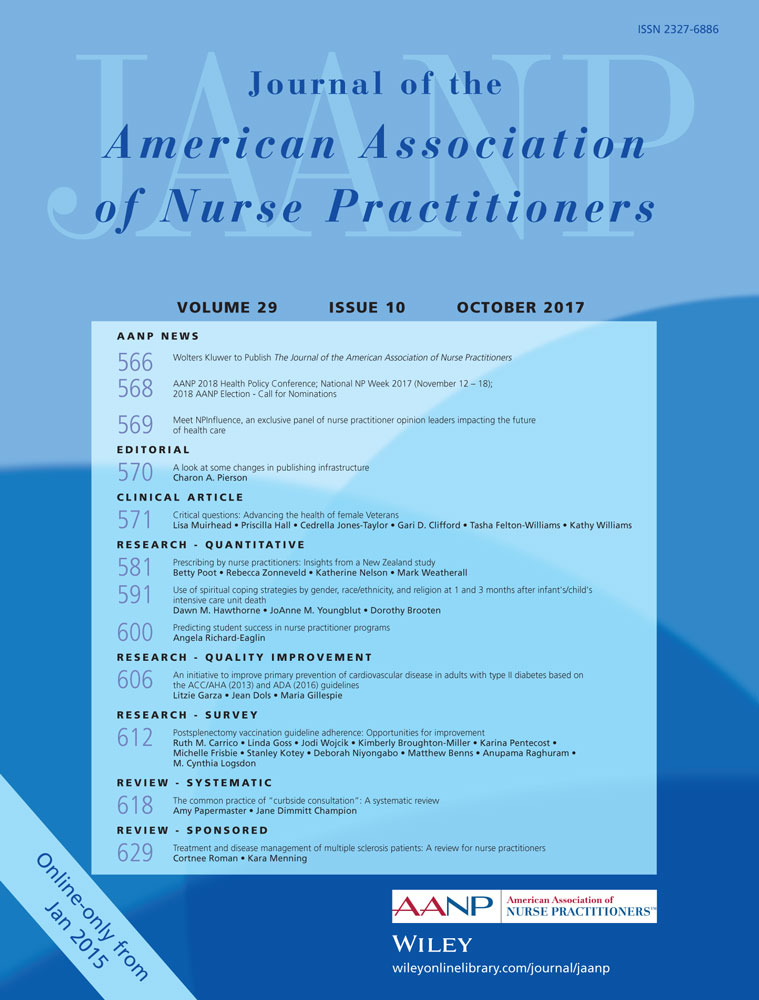The common practice of “curbside consultation”: A systematic review
Disclosure:
Neither author has conflicts of interest relevant to the work.
Abstract
Purpose
Point-of-care information needs for nurse practitioners are tremendous. A phenomenon often referred to as curbside consultation (CC) with colleagues is an information source for point-of-care clinical decision making. This literature review was conducted to describe: (a) characteristics of CC, (b) consistency of CC definition, and (c) attitudes about CC among health professionals using this information source for point-of-care clinical decision making.
Methods
This literature review includes research conducted from 1980 to 2016 concerning CC among health professionals. Data bases including PubMed, CINAHL, Google Scholar, Web of Science, PsychInfo, Business Source, and Cochrane Library were searched resulting in 15 articles for inclusion in this review. Fink's recommendations were used to assess study bias risk.
Conclusions
Only studies including physician samples met inclusion criteria. These studies, primarily from consultant perspectives, were conducted in varied settings and were considered highly valuable. CC s averaging 9.4 min were defined as informal advice and information-seeking without formal consultation.
Implications for practice
A paucity of information exists concerning CC use among nurse practitioners. An assessment of CC processes among nurse practitioners is indicated to inform education and practice for research dissemination ultimately promoting patient care quality.




